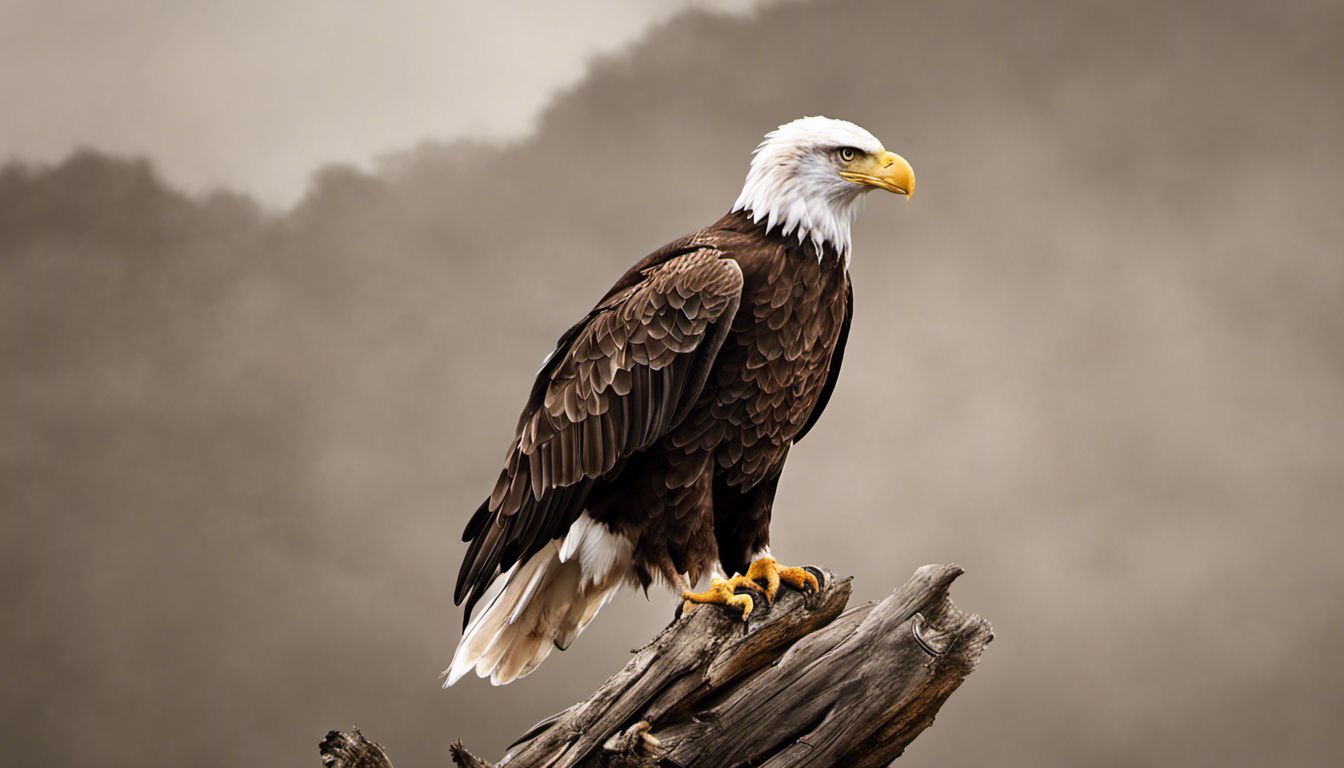A bald eagle typically has around 7,000 feathers ranging from small fluffy down to large flight feathers. The exact number can vary as eagles molt, or shed and regrow feathers, annually.
Key takeaways about the feather count, molting, diet, and longevity of bald eagles include:
- Bald eagles have an impressive number of around 7,000 feathers that play key roles in insulation and flight.
- The eagles undergo an annual molt, a process involving the shedding and replacement of feathers which ensures their optimal condition.
- Their diet, which is rich in fish and other meats, provides the necessary nutrients for feather growth and overall health.
- With such care in maintaining their feathers, along with their nutritious diet, bald eagles can have a longevity of up to 20-30 years in the wild.
The Fascinating Feather Count of Bald Eagles

Bald eagles boast a remarkable feather count, with a typical adult having roughly 7,000 feathers. This impressive number can fluctuate slightly depending on factors like the eagle’s age and size, as younger birds or smaller individuals may have a slightly different quantity of feathers.
Here is a quick breakdown of the feather count in bald eagles:
- The average bald eagle has about 7,000 feathers in total.
- Feather count can vary with the age of the eagle, as younger birds are still growing in their plumage.
- The size of the eagle can also influence the exact number of feathers, with larger eagles possibly having more.
The Intricate Molt Process of Bald Eagles

The molt process in bald eagles is a gradual and systematic replacement of feathers, ensuring the birds do not lose their ability to fly or regulate their body temperature. This intricate process begins with specific molt patches and is spread out, often taking about half a year for a full replacement of feathers to occur. The molt sequence follows a specific order that allows for continuous flight capability.
Learn a bit more about the molting process:
- Bald eagles begin the molt process at certain molt patches, where feathers are replaced in a particular sequence.
- The entire process can take up to a half-year to complete, ensuring there’s no time when the eagle is unable to fly.
- The molt sequence is designed to maintain flight and insulation throughout the year as new feathers grow in to replace old ones.
The Bald Eagle’s Diet and Longevity

Bald eagles have a diet primarily consisting of fish, but they are opportunistic feeders and will also consume waterfowl, small mammals, and carrion as available. These dietary habits support their health and contribute to their notable longevity, with some eagles living up to thirty years in the wild.
Here’s a closer look at the diet and longevity of bald eagles:
- The bald eagle diet is predominantly fish, but it also includes diverse sources of food like waterfowl and carrion.
- Their opportunistic feeding behavior ensures they utilize a wide range of food resources for nutrition.
- Bald eagles can have a longevity of up to thirty years in their natural habitat.

